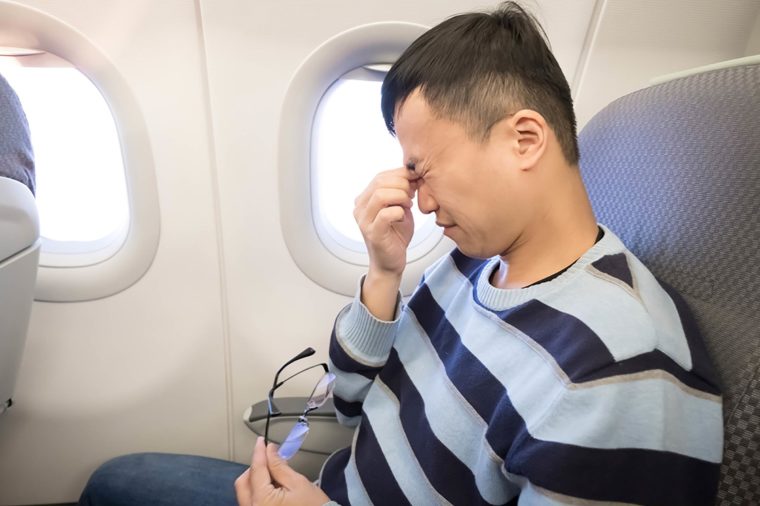Whether you’re lounging or in the upright and locked position, a plane seat just isn’t your bed. (This is the reason why your seat needs to be “upright and locked” during takeoff and landing.) The seats are more sardine-packed than ever before. Plus, you’re hurtling through the air at 550 miles per hour. How are you expected to sleep through that?
In short, catching some sleep while flying is just plane difficult. The nut of the issue is structural, not stimuli-related: The human body just isn’t designed to sleep sitting up.
If you’re hoping to catch a quick snooze though, you might just be fine. But for those overnight long-distance flights, your sleep cycle is actively fighting against you. Dr. Neil Kline, a sleep disorder physician and the CEO of the American Sleep Association, spoke to Mental Floss about the sleep stage which makes your airline sleeping efforts so Herculean.
“Usually during REM sleep, other than eye movements, our voluntary muscles are paralyzed….We likely evolved this disconnect during REM sleep in order to prevent injury to ourselves.”
REM sleep kicks into gear about 70 to 90 minutes into your snooze. So you might be coasting along just fine, but once this stage hits, the sleep posture you took so much time to adjust yourself into goes out the window. If you’re in the middle seat, you might just bump into your neighbor; if you’re by the window, you might just slide your head against that cold plexiglass; if you have an aisle seat, well, you’re possibly colliding into a drink cart.
Bottom line: When you hit REM stage in your bed, gravity isn’t working against you, and you’re obviously working with a lot more space; the paralysis is relatively harmless. When you’re on a plane, it doesn’t exactly work that way, making it difficult to summon the sandman.












